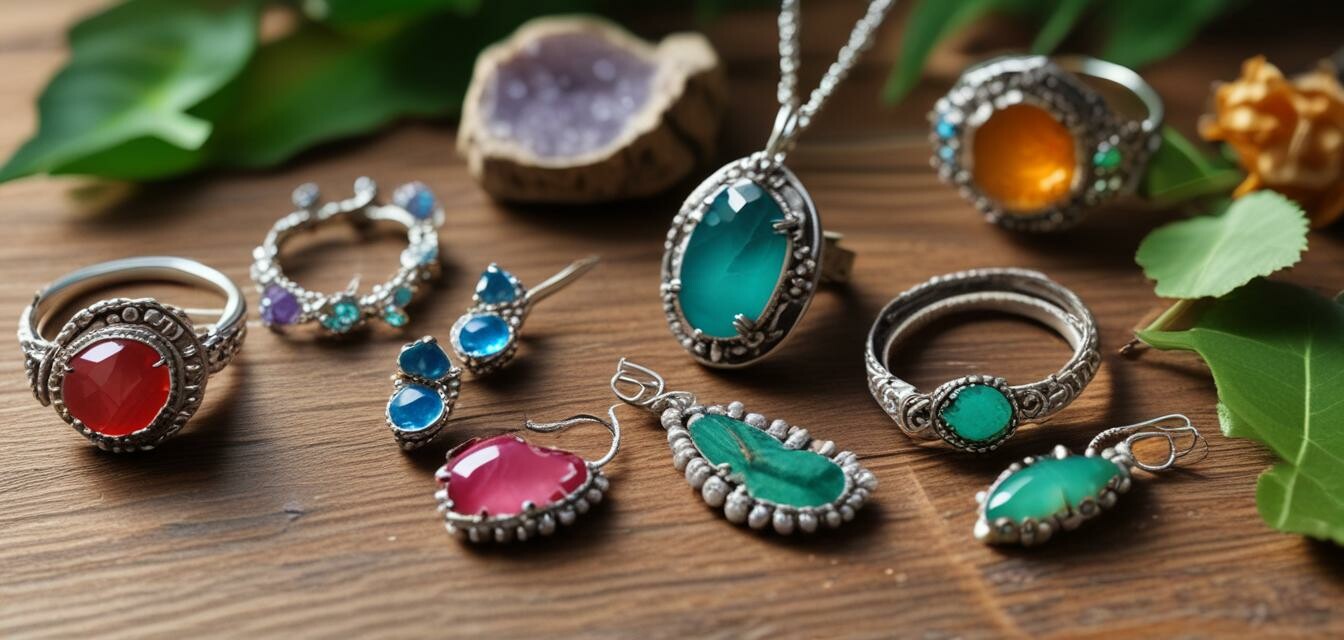
The Role of Community in Ethical Jewelry
Key Takeaways
- Community involvement fosters ethical practices in jewelry making.
- Collaborations between artisans and communities lead to sustainable practices.
- Consumer awareness is crucial for supporting ethical jewelry brands.
- Local craftsmanship boosts the economy and empowers artisans.
- Engagement in community initiatives enhances transparency in the supply chain.
The jewelry industry is undergoing a transformation, as more consumers are seeking **ethically sourced** products. At the heart of this movement is the concept of community. By involving local artisans and supporting sustainable practices, communities play a crucial role in shaping ethical jewelry. In this article, we will explore how community involvement is not just beneficial, but essential to promoting ethical practices within the jewelry industry.
Understanding community involvement in jewelry
Community involvement refers to the participation of various stakeholders in a shared initiative aimed at achieving a common goal. In the context of the jewelry industry, this includes artisans, consumers, local businesses, and various organizations working together to promote ethical standards.
Importance of community in promoting ethics
The impact of **community engagement** in promoting ethics within the jewelry industry cannot be overstated. Here are some key contributions of communities:
- **Cultural Preservation:** Local communities maintain their traditions, which often include jewelry making. This fosters a sense of identity and pride.
- **Ethical Practices:** The involvement of local artisans ensures that ethical practices are upheld, as communities hold each other accountable.
- **Economic Growth:** Investing in local artisans leads to job creation and economic stability within the community.
- **Sustainability:** Community-based initiatives promote eco-friendly practices and sustainable sourcing of materials.
Forms of community involvement
Various forms of community involvement contribute to the gem and jewelry sector:
| Type of Involvement | Description |
|---|---|
| Workshops | Local artisans conduct workshops to share skills and promote traditional techniques. |
| Collaborative Projects | Artisans and designers work together to create unique pieces that reflect community values. |
| Consumer Education | Communities host events to raise awareness on ethical jewelry sourcing and environmental impact. |
Challenges faced by communities in ethical jewelry
While community involvement is vital, it is not without its challenges:
- Lack of Awareness: Many consumers are unaware of the impact of their purchasing choices.
- Resource Limitations: Local artisans may struggle with accessing resources needed for sustainable practices.
- Market Competition: Pressure from mass-produced jewelry brands makes it tough for smaller artisans to compete.
Success stories in community-driven ethical jewelry
Communities around the globe are setting examples of successful ethical jewelry initiatives:
- **The Artisan Collective** in Africa promotes local craftsmanship by connecting jewelers with ethically-minded consumers.
- **Fair Trade Organizations** help ensure artisans receive fair wages and operate under safe conditions.
- **Local Markets and Fairs** encourage direct sales which bolster community engagement and awareness around ethical practices.
How consumers can make a difference
As consumers, there are several ways you can support community involvement in ethical jewelry:
Tips for consumers
- Research brands to ensure they practice ethical sourcing.
- Support local artisans by purchasing directly from them.
- Participate in community events or workshops.
- Spread awareness about ethical practices in jewelry.
- Choose jewelry made from sustainable materials.
Conclusion
The role of community in ethical jewelry is critical for fostering sustainable practices and empowering artisans. By participating in local initiatives, supporting ethical brands, and spreading awareness, consumers can help shape a more responsible jewelry industry. As trends continue to evolve, the influence of community will remain a cornerstone in driving ethical practices in the world of gemstone jewelry.
Pros
- Promotes ethical sourcing and sustainability.
- Empowers local artisans.
- Cultivates cultural heritage and traditions.
Cons
- Limited access to resources for artisans.
- Challenges in competing with larger brands.
For more insights into ethical jewelry, check out our article on Buying Guides for ethical products or explore our Ethical Stone Earrings collection to discover beautiful, sustainable options.